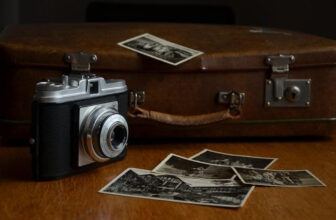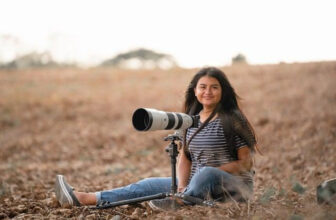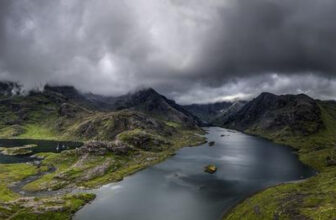Mastering the Art of Street Photography: Essential Tips
GoogleAds

In the fast-paced, ever-evolving world of street photography, mastering the art can be a challenging but rewarding endeavor. Whether you’re a seasoned pro or just starting out, understanding the essential tips and techniques can elevate your work to the next level. From capturing candid moments to playing with composition and lighting, mastering street photography requires a keen eye and a willingness to embrace the unexpected. In this article, we’ll explore key tips and tricks to help you hone your skills and capture the essence of the world around you.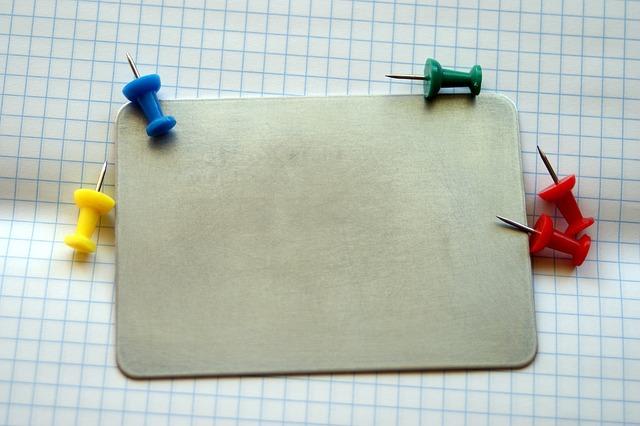
Introduction
Street photography is a popular and captivating genre that captures the raw essence of urban life. It involves capturing unposed scenes in public places, focusing on the people, architecture, and everyday moments that make up the fabric of a city. Mastering the art of street photography requires skill, patience, and a keen eye for detail. Whether you’re a beginner or a seasoned pro, these essential tips will help you take your street photography to the next level.
One of the most important aspects of street photography is observation. Take the time to really observe your surroundings, paying attention to the light, shadows, and movement around you. Look for interesting compositions and unique perspectives that will make your photos stand out. Remember, sometimes the most ordinary scenes can make for the most extraordinary photographs.
Another key tip for mastering street photography is to blend in with your environment. Keep a low profile and avoid drawing attention to yourself. Use a small, discreet camera and shoot from the hip to capture candid moments without disturbing your subjects. By blending in with the crowd, you’ll be able to capture authentic moments that tell a story and evoke emotion.
Composition is crucial in street photography. Pay attention to framing, leading lines, and the rule of thirds to create visually appealing images. Experiment with different angles and perspectives to add depth and interest to your photos. Remember, there are no hard and fast rules in photography, so don’t be afraid to break the rules and try new things.
Timing is everything in street photography. Be patient and wait for the perfect moment to capture your shot. Anticipate the action and be ready to press the shutter button at just the right moment. Sometimes, it only takes a split second to capture a fleeting expression or a decisive moment that tells a powerful story. Trust your instincts and be prepared to take risks to get the perfect shot.
Lastly, post-processing can take your street photography to the next level. Use editing software to enhance your images, adjusting the exposure, contrast, and color to create a unique look. Experiment with black and white conversions, filters, and effects to give your photos a creative twist. Remember, the goal of editing is to enhance your images, not to distort reality. Let your creativity shine through while staying true to the essence of street photography.
Choosing the Right Equipment
When it comes to mastering the art of street photography, one of the most important aspects is selecting the right equipment. With the plethora of cameras and lenses available on the market, it can be overwhelming to choose the perfect gear for your street photography adventures. Here are some essential tips to help you make the right choice:
1. Consider the Size and Weight: Street photography often involves a lot of walking and moving around. It is crucial to have equipment that is lightweight and portable. Opt for compact cameras or mirrorless systems that are easy to carry and handle.
2. Focus on Versatility: Street photography requires flexibility to capture different scenes and subjects. Choose gear that offers a wide range of focal lengths and settings. A zoom lens or a prime lens with a moderate focal length can be a great choice.
3. Low-Light Performance: Street photography often takes place in various lighting conditions, including low light. Look for equipment with good low-light performance, such as a camera with a wide aperture lens or high ISO capabilities.
| Camera Model | Low-Light Capability |
|---|---|
| Canon EOS R5 | Excellent |
| Sony A7 III | Very Good |
| Fujifilm X-T4 | Good |
4. Consider the Stealth Factor: To capture candid moments in street photography, it is important to blend in with the surroundings. Consider the color and design of your equipment to be inconspicuous and not draw attention to yourself.
5. Weather Sealing: Street photography can often expose your gear to unpredictable weather conditions. Choose equipment with weather sealing to protect your camera and lenses from dust, rain, and other elements. This will ensure the longevity of your gear and allow you to focus on capturing stunning images.
Understanding Composition and Framing
When it comes to mastering street photography, one of the key elements to focus on is . These aspects play a crucial role in capturing compelling and visually engaging images that tell a story. By honing your skills in composition and framing, you can elevate your street photography to new heights.
Composition is the arrangement of elements within a photograph, while framing involves how the subject is positioned within the frame. By paying attention to both of these elements, you can create images that are not only visually appealing but also have a strong narrative quality. When composing your shot, consider the following tips:
- Use the rule of thirds to create balance and harmony in your images.
- Pay attention to lines and shapes in the scene to lead the viewer’s eye through the frame.
- Experiment with different perspectives to add depth and dimension to your photos.
Another important aspect of composition and framing in street photography is the use of negative space. Negative space refers to the empty areas in a photograph that help to highlight the subject. By incorporating negative space effectively, you can draw attention to the main subject and create a sense of balance in your composition.
When it comes to framing, consider how the subject interacts with the surrounding elements in the scene. Look for opportunities to frame your subject within doorways, windows, or other architectural elements to add interest and depth to your photos. By using framing creatively, you can create dynamic and visually striking images that capture the essence of street life.
In conclusion, mastering the art of street photography requires a keen understanding of composition and framing. By incorporating these elements into your work, you can create images that are not only aesthetically pleasing but also tell a compelling story. So next time you hit the streets with your camera, remember to pay attention to composition and framing to capture the magic of everyday life.

Developing a Unique Style
In street photography, is essential to stand out in a sea of photographers capturing everyday moments. Your style is what sets you apart from the rest, making your work recognizable and memorable. Here are some essential tips to help you master the art of street photography and develop a style that is uniquely yours:
1. Study the Masters: Take the time to study the work of famous street photographers such as Henri Cartier-Bresson, Daido Moriyama, and Garry Winogrand. Analyze their compositions, editing techniques, and choice of subjects to gain inspiration and insight into developing your own style.
2. Experiment with Different Techniques: Don’t be afraid to try out different techniques such as shooting from different angles, using different lenses, or playing with light and shadows. Experimenting with various techniques will help you discover what works best for you and what sets your work apart from others.
3. Find Your Unique Perspective: Look for ways to capture everyday moments from a fresh and unique perspective. Whether it’s shooting from a low angle, capturing reflections, or incorporating interesting backgrounds, finding your unique viewpoint will help you develop a style that is distinctively yours.
4. Use Post-Processing to Enhance Your Style: Post-processing is an essential part of in street photography. Experiment with different editing techniques such as black and white conversion, color toning, or adding textures to give your images a distinct look that reflects your personal style.
5. Stay True to Yourself: Ultimately, in street photography comes down to staying true to yourself and your creative vision. Don’t try to emulate others or follow trends just for the sake of it. Instead, trust your instincts, experiment, and stay authentic to create work that is truly your own.
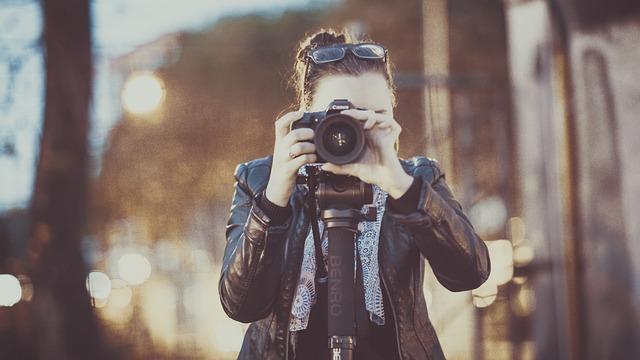
Capturing Candid Moments
When it comes to on the streets, there are a few essential tips that every aspiring street photographer should keep in mind. Whether you’re a beginner or a seasoned pro, mastering the art of street photography takes practice, patience, and a keen eye for detail.
One of the most important tips for is to blend in with your surroundings. Avoid drawing attention to yourself by dressing in neutral colors and avoiding flashy accessories that could make you stand out in a crowd. This will help you to observe and capture genuine moments without disturbing the natural flow of the scene.
Another essential tip for street photography is to always be prepared. Make sure your camera settings are adjusted for quick shots, and have your camera ready to capture the moment at a moment’s notice. Anticipate interesting moments and be ready to press the shutter button at the perfect time.
Composition is key when it comes to on the streets. Pay attention to leading lines, framing, and the rule of thirds to create visually appealing photos that draw the viewer in. Experiment with different angles and perspectives to add depth and interest to your images.
Lastly, don’t be afraid to experiment and have fun with your street photography. Try different techniques, such as shooting from the hip or using a telephoto lens for candid shots from afar. Remember, the best street photos are often the ones that capture authentic moments and emotions in a unique and compelling way.

Working with Natural Light
One of the key elements in street photography is , as it can greatly impact the mood and atmosphere of your photos. Understanding how to master natural light is essential for capturing compelling and visually stunning images on the streets.
When , it is important to pay attention to the direction and quality of light. Soft, diffused light is often ideal for street photography as it helps to create gentle shadows and highlights, resulting in a more flattering and natural look. Try to shoot during the golden hours – early morning or late afternoon – when the light is softer and warmer, making for more interesting and dynamic photos.
Another important aspect to consider when is the position of the sun. Keep in mind that shooting with the sun directly behind your subject can create harsh shadows and overexposed areas. Instead, look for interesting angles and perspectives that allow the light to enhance your composition and add depth to your images.
Experimenting with different lighting techniques can also help you to create unique and creative street photos. Consider using backlighting to create silhouettes or side lighting to highlight textures and details in your subjects. By understanding how light interacts with your environment, you can take your street photography to the next level.
Overall, developing your skills in is key to mastering the art of street photography. By paying attention to the quality, direction, and position of light, as well as experimenting with different techniques, you can create visually compelling and emotionally impactful images that capture the essence of life on the streets.

Engaging with Your Subjects
One of the key elements in mastering the art of street photography is in a meaningful and respectful way. Building a connection with the people you photograph can result in more authentic and powerful images. Here are some essential tips to help you effectively engage with your subjects:
First and foremost, approach your subjects with a friendly and positive attitude. Smile, introduce yourself, and explain why you are interested in taking their photo. Building rapport with your subjects will make them feel more comfortable and willing to participate in the photo-taking process.
When photographing people on the streets, always ask for permission before taking their picture. Respect their privacy and boundaries. If someone declines to be photographed, gracefully accept their decision and move on to the next subject. It’s important to always prioritize the consent and comfort of your subjects.
Listen to your subjects and show genuine interest in their stories. Engage in conversation, ask questions, and be present in the moment. Building a connection with your subjects not only enhances the photo-taking experience but also adds depth and meaning to the images you capture.
Remember to express gratitude to your subjects for allowing you to photograph them. A simple thank you goes a long way in showing appreciation for their time and cooperation. By fostering positive relationships with the people you photograph, you can create a more collaborative and enjoyable street photography experience for both you and your subjects.
Q&A
Q: What is street photography and why is it considered an art form?
A: Street photography is a genre of photography that captures candid moments of everyday life in public spaces. It is considered an art form because it requires skill, creativity, and a keen eye for capturing fleeting moments that tell a story.
Q: What are some essential tips for mastering the art of street photography?
A: Some essential tips for mastering street photography include practicing patience, observing your surroundings, being aware of lighting and composition, and developing your own unique style.
Q: How important is it to build rapport with your subjects in street photography?
A: Building rapport with your subjects in street photography can help create a more natural and authentic connection, leading to more compelling and meaningful photographs. However, not all street photographers choose to engage with their subjects, as it can sometimes alter the candid nature of the shot.
Q: What gear is essential for street photography?
A: While the gear can vary depending on personal preference, some essential items for street photography include a camera with a fast lens, a comfortable camera bag, spare batteries and memory cards, and possibly a tripod or monopod for stability.
Q: How can one overcome the fear of photographing strangers on the street?
A: Overcoming the fear of photographing strangers on the street can be challenging, but can be achieved by practicing mindfulness, staying confident in your abilities, and respecting the privacy of your subjects. Remember that most people are flattered to be photographed and may even strike up a conversation with you after.
Insights and Conclusions
In conclusion, mastering the art of street photography takes time, patience, and practice. By following these essential tips, aspiring street photographers can improve their skills, develop their own unique style, and capture the vibrancy of everyday life in urban environments. Remember to always be respectful of your subjects, embrace spontaneity, and keep experimenting to continue honing your craft. With dedication and perseverance, you can truly become a master of street photography. Happy shooting!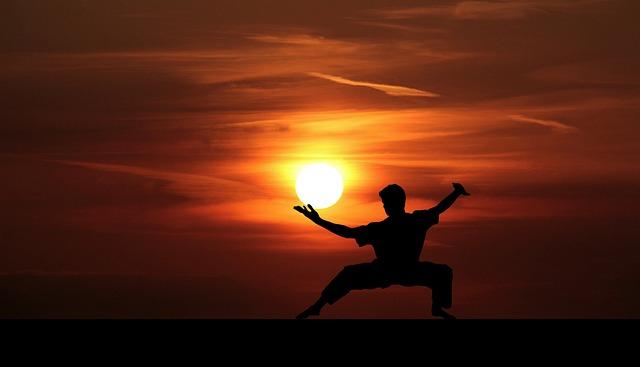
GoogleAds



